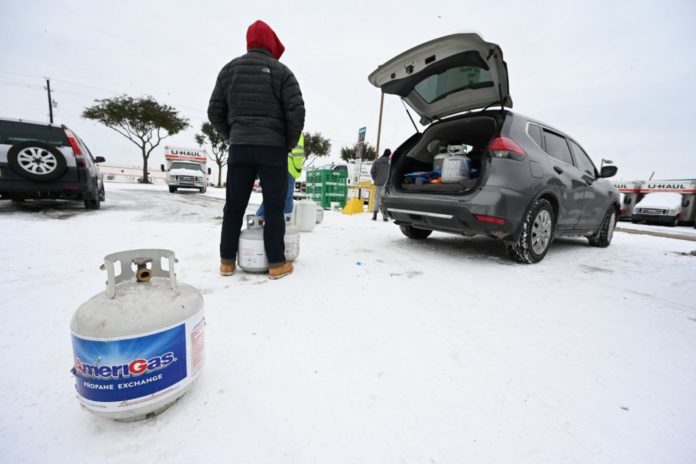
Feb. 19 (UPI) — Millions in Texas were still without heat, power and clean tap water on Thursday due to the freezing winter storm that broke records and dumped rare snow and ice statewide — but the temperatures are finally warming up.
The storm arrived earlier this week and was part of a larger system that has affected numerous states in the Midwest and South and led to dozens of deaths.
The storms dumped several inches of snow on some portions of Texas and Oklahoma over the weekend and Wednesday, leading to widespread power outages across the region. Some residents were forced to try and stay warm in their vehicles.
In Texas, more than 300,000 people were without electricity along with more than 97,000 in Louisiana and nearly 120,000 in Mississippi as of Thursday night, according to poweroutage.us. Officials say some will likely have to go without power, and heat, for a few more days as the state’s power grid has been frozen by the winter blast.
Residents in 100 Texas counties were also under advisories to boil their water after blackouts shut down treatment facilities. About 7 million people statewide were affected by the advisories. Several cities have also seen water main breaks, adding to the crisis.
President Joe Biden ordered the Federal Emergency Management Agency to send generators and other supplies to Texas while declaring a state of emergency in both Texas and Oklahoma.
Colder-than-normal temperatures were forecast to remain in Texas through the end of the week.
Louisiana transportation officials shut down a busy Interstate 20 for about 15 miles near Shreveport on Wednesday due to the icy weather.
Several states have seen record cold this week, as well as tornadoes and a number of related deaths.
The storm moved eastward and is expected to produce ice and snow from the Carolinas to New England in the coming days.
Some of the highest snowfall totals Thursday were seen in southeastern Pennsylvania and parts of Maryland and West Virginia have also reported several inches.
Heavy snow, as many as 10 inches, is forecast on Thursday and Friday for the New York City area, which has already received nearly twice its normal seasonal snowfall to date.
Some of the lowest temperatures in the United States this week were seen in International Falls, Minn., which has earned the nickname “the Ice Box of the Nation.”
The town typically sees more than 100 days each year with high temperatures at or below 32 degrees Fahrenheit. This week, the extremes were nothing short of remarkable and downright dangerous. Low temperatures bottomed out at 42, 35 and 39 degrees below zero early this week.
Hundreds of additional flights have been canceled across the region on Thursday, including 346 out of Dallas-Fort Worth and 241 out of Houston, adding to the thousands that were scrapped earlier this week, according to FlightAware.com.
The total economic cost of the major winter storm is in the tens of billions, according to experts.
AccuWeather CEO Joel Myers estimates the losses at between $45 and $50 billion, which is comparable to the economic damage resulting from an active hurricane season.
“We have been experiencing one of the stormiest patterns seen in decades,” Myers said. “The damage has been exacerbated by the record cold temperatures.”






